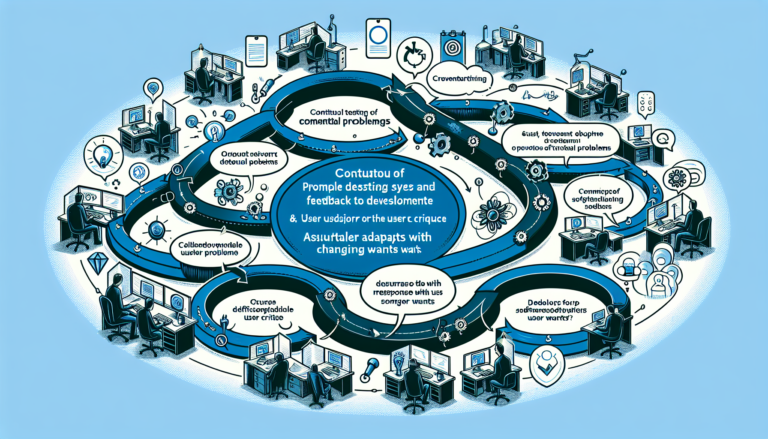“Designing Success: Aligning UI with Business Goals for Unmatched Growth”
In today’s competitive digital marketplace, aligning user interface (UI) design with strategic business goals is critical for success. Imagine your business as a vibrant digital city, where every interaction serves a purpose and is aligned with your brand’s core identity. Your UI design acts as the city planner, creating intuitive pathways that not only fulfill user needs but also enhance brand storytelling.
Visualize your digital project as a grand gala at an art gallery. You play the dual role of curator and visionary, ensuring that each design element aligns with your business strategies. This seamless blending of user experience with business foresight is vital for creating digital experiences that captivate users while achieving strategic goals.
User-centric design is the foundation of effective UI/UX alignment. Understanding your audience is key—know who they are, what drives them, and how they interact with your digital space. By crafting detailed user personas and mapping their journeys, you pave the way for interfaces that are both intuitive and engaging.
Learn from industry leaders like Apple and Google, who embody seamless UI alignment with their strategic objectives. Every interaction on their platforms reflects a meticulously designed brand identity that resonates with users. This strategic synergy fosters engagement and drives growth.
Maintaining this alignment requires ongoing dedication. It’s like cultivating a thriving garden, where regular feedback loops and testing are essential tools for aligning design with user needs and business objectives. This iterative process ensures your design remains fresh and relevant.
Brand identity is integral to UI design. Consider it a digital tapestry that reflects your brand values. Elements like color schemes, typography, and imagery should echo your brand’s essence, reinforcing user recognition and loyalty. Just as a city’s skyline tells its story, so should your UI design reflect your brand’s narrative.
Data analytics and user engagement metrics serve as a roadmap to success. By translating raw data into insights, you can inform design strategies that are both actionable and aligned with business goals. In e-commerce, for instance, optimizing UI for conversions involves crafting intuitive pathways that guide users towards purchase decisions.
Scalability is another crucial aspect. As your business grows, so should your digital city. Anticipating future demands ensures your design evolves to meet new challenges and market shifts. This foresight allows your business to thrive and adapt in an ever-changing digital landscape.
Explore these themes further in our related blogs. "Building a User-Friendly Digital City: Mastering UI/UX Design" offers strategies to tackle common design challenges, while "Mastering the UI/UX Narrative: Crafting Memorable Digital Experiences for Business Success" provides insights into creating seamless user experiences.
Aligning UI design with strategic goals is a journey of continuous evolution, driven by insights and strategic foresight. It’s about crafting experiences that resonate deeply with users and tell a compelling brand story. For a comprehensive guide, check out "Software Simplified: Navigating Development for Business Success," available at Amazon. This resource offers valuable insights into integrating UI/UX with business strategy.
For more practical steps and expert advice, visit these related blogs:
- Building a User-Friendly Digital City: Mastering UI/UX Design
- Mastering the UI/UX Narrative: Crafting Memorable Digital Experiences for Business Success
- Unveiling the Path to Success: Mastering User Journey Mapping
These resources provide actionable insights into achieving strategic UI alignment, nurturing both growth and user engagement with precision and clarity.






